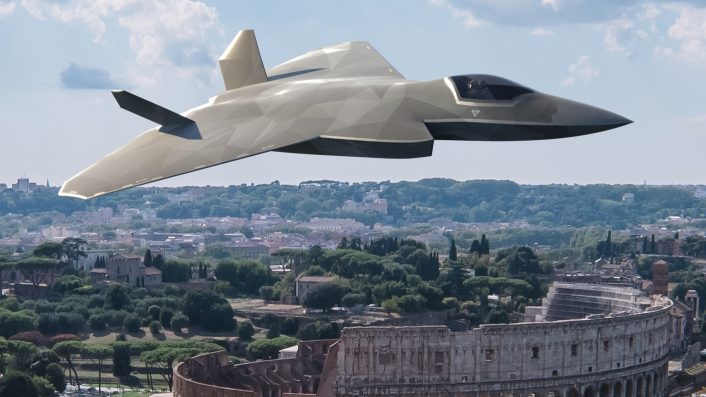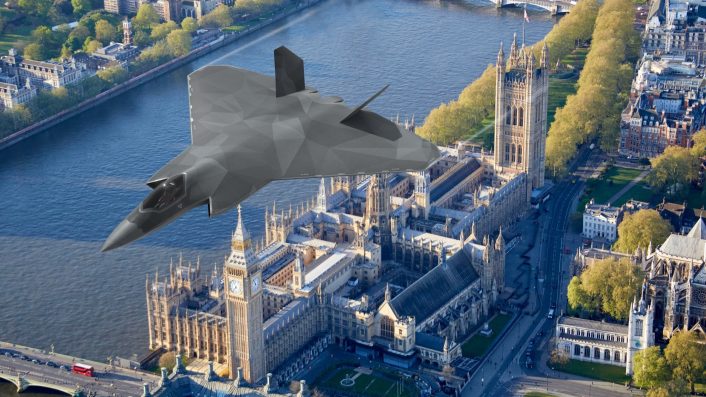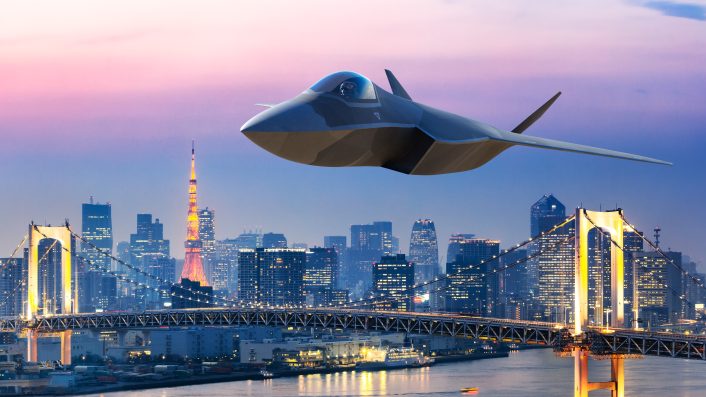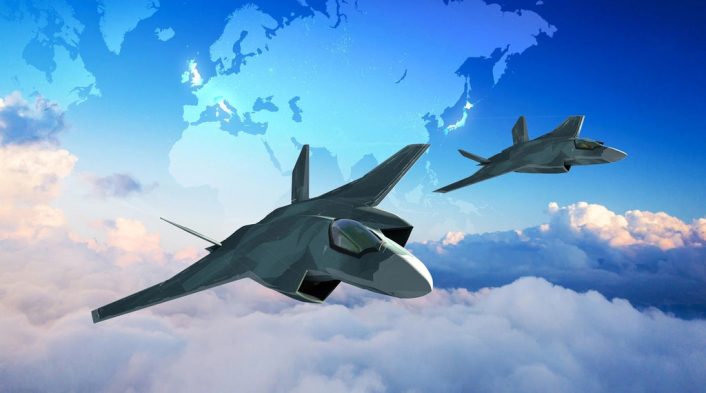Edgewing will be accountable for the design and development of the next generation combat aircraft and will remain the design authority for the life of the product.
The three industrial partners of the Global Combat Air Programme (GCAP), BAE Systems, Leonardo and Japan Aircraft Industrial Enhancement Co. Ltd., announced the name of their Joint Venture (JV), Edgewing. Each of the three companies, representing UK, Italy and Japan, respectively, will hold an equal 33.3% share in the JV.
“Edgewing will be accountable for the design and development of the next generation combat aircraft and will remain the design authority for the life of the product, which is expected to go out beyond 2070,” said a joint press release. Additionally, as a part of the agreed rotating leadership for the program, Edgewing will be headed by the former managing director of the Leonardo Aircraft Division, Marco Zoff, as the CEO.
The new fighter is expected to replace the Eurofighter Typhoons in the United Kingdom and Italy and the F-2s (Japanese derivative of the F-16) in Japan from 2035 onwards. The agreement for the JV was reached in Dec. 2024, and is expected to synergize the political and industrial dynamics of the massive project, which associated industry and political figures have already hinted may overshoot the 2035 operationalization timeline.
An exciting new partnership has launched that will advance the global defence ecosystem.
Discover Edgewing, a joint venture uniting the strengths of the #UK, #Italy& #Japan to pioneer a truly capable next generation combat air system. pic.twitter.com/gkmfe0XR6F
— Edgewing (@EdgewingLtd) June 20, 2025
Edgewing will function under the GCAP International Government Organisation (GIGO) that was previously established. GIGO consists of a Steering Committee (SC) and the GCAP Agency, where the SC provides oversight and strategic direction, while the GCAP Agency, headquartered in Reading, UK, coordinates industrial activities and oversees regulatory compliance.
Edgewing will also be based in the UK, allowing “operations and joint teams working in each of the partner nations” to achieve the “maximum alignment and collaboration with the GIGO.”

Executives’ statements
The press release quoted Zoff, who shared the excitement for the launch of Edgewing: “By uniting the strengths of our talented people in the UK, Italy, and Japan, we are not only delivering the next-generation combat air system – we aim to set a new global standard for partnership, innovation and trust. Together, we will push boundaries, embrace agility, enhance our national supply chains.”
Masami Oka, Chief Executive, GCAP International Government Organisation (GIGO), called Edgewing “an important step” towards “a truly international joint development programme.” Additionally, Oka added that “Effective and empowered collaboration between the GIGO and Edgewing will be critical for the success of GCAP. I am confident that together we can establish a new model of partnership that will promote international integration, mutual trust and a shared commitment to our future.”
The good news is the partners have agreed an industrial joint venture to deliver #Gcap. The bad news is we are all going to have to wait a little longer to learn its name. Promised it will be something “iconic”, a la #Sepecat #Panavia #Eurofighterbut still to be decided… pic.twitter.com/0ZGu0AIljI
— Gareth Jennings (@GarethJennings3) December 13, 2024
“GCAP is a hugely significant programme for the security and economic prosperity of each nation and through effective knowledge and technology transfer, it will help to evolve and build resilient supply chains and deliver important sovereign combat air capability in each nation,” further mentioned the press release.


Industrial challenges
As touched upon previously, the gigantic GCAP project faces its fair share of challenges, as expected for a program of such a scale. For the first time Japan is directly working with Italy and the United Kingdom on a novel financial, industrial and political footing, with equal operational and technological access – a novelty for all three nations after the F-35 program.
For instance, there would be several other leading defense companies as the secondary vendors developing critical components. These might include a possible consortium between Rolls-Royce (U.K), IHI Corporation (Japan) and Avio Aero (Italy) for the propulsion systems, similarly to the Eurojet consortium to develop the Typhoon’s engine.
Sixth generation jets – a concept itself still being theoretically and conceptually debated – have been often mentioned to possibly use adaptive cycle engines, requiring tens of millions in research and development. GCAP is expected to integrate such technology, which would allow increased thrust and range with a reduced fuel consumption.
The #Gcap industry partners – @BAESystemsplc 🇬🇧, @Leonardo_live 🇮🇹 & JAIEC 🇯🇵 – have reached a landmark agreement to form a business joint venture that will work alongside the GCAP International Government Organisation to deliver the next generation of combat aircraft.✈️ pic.twitter.com/DTb1WqXl2h
— GlobalCombatAir (@GlobalCombatAir) December 13, 2024
The GCAP fighter’s future weapons systems would meanwhile be developed by MBDA U.K., MBDA Italy and Mitsubishi Electric. Lastly, Leonardo Electronics Italy, Leonardo U.K., Mitsubishi Electric and ELT Group will collaborate on developing the advanced electronics, avionics, radar, communications, datalinks, and advanced sensing and sensor fusion capability in line with its ‘system of systems’ and situational awareness orientation.
The Japan Times recently quoted JAIEC (joint venture launched in Jul. 2024 between the Society of Japanese Aerospace Companies and Mitsubishi Heavy Industries) president Kimito Nakae about the three countries carefully delegating the workload based on their strengths, affirming Japan’s inexperience in large multinational programs. “Japan’s industry is not very familiar with the European standards and processes for developing aircraft, so we also see this as an opportunity,” Nakae said in the report.
Sources also told the publication that, regulatory approval processes aside, sticking issues like workload distribution and access to intellectual property are also still being internally debated. Herman Claesen, Managing Director for Future Combat Air Systems at BAE Systems, told Tjt that, while 2035 remains the target date, the project is “incredibly challenging, and there’s still a lot of analysis to be done, detailed work to be established.”


Technical challenges
Developing the technologies required for the GCAP is a complex engineering effort. Among the capabilities provided by these technologies will be a next generation airborne networking, which would allow the aircraft to work with legacy 4th and 5th generation platforms, while controlling drones and collaborative unmanned aircraft.
The GCAP is expected to be a force multiplier for legacy systems, which would also provide commanders an optimal overview of the battlespace situation. The aircraft is expected to work with huge quantities of data, and that will require increased computing capacity.
Commercial hurdles
Preventing deadline overshoots and cost overruns are some of the elementary concerns. Because of this, the program needs to be able to select other partner nations not only on their funding ability, but also for their technological and industrial capabilities, without affecting the timeline.
For instance, there have been reports of Saudi Arabia and India considering joining the GCAP. Riyadh would provide financial resources, while New Delhi has a relatively developed defense and aerospace industry. However, that is not enough by itself, and the two countries would have to pass an evaluation before joining the program.
The UK, Italy and Japan welcome a new Joint Venture that will deliver the Global Combat Air Programme (GCAP). The company, @EdgewingLtdwill work with the GCAP International Government Organisation to deliver a next-gen combat aircraft. pic.twitter.com/z5F670G1ga
— Ministry of Defence 🇬🇧 (@DefenceHQ) June 20, 2025
Avoiding the mistakes of the Eurofighter Typhoon program is another challenge, as the three countries need to ensure the GCAP’s exportability while also avoiding disputes over foreign sales. Securing foreign sales is a broader economic imperative not only to be able to lower the overall costs, but also to avoid shutting production lines, losing highly-skilled manpower, and consequently facing local economic impact.


Cultural obstacles
From the Japanese side, the only major development has been at the ceremonial end – itself presumably still being debated – about possibly naming its GCAP fighter after the World War Two-era cancelled Imperial Japanese Navy (IJN) fighter A7M Reppu.
This plan itself stirs a political minefield given its connection to Tokyo’s wartime past, that successive governments and domestic politics have consciously steered away from. A British Parliamentary report also noted this “cultural antimilitarism,” placing it in context of ensuring the success of the GCAP program.
Source link
[aviation news]
Share this content:


